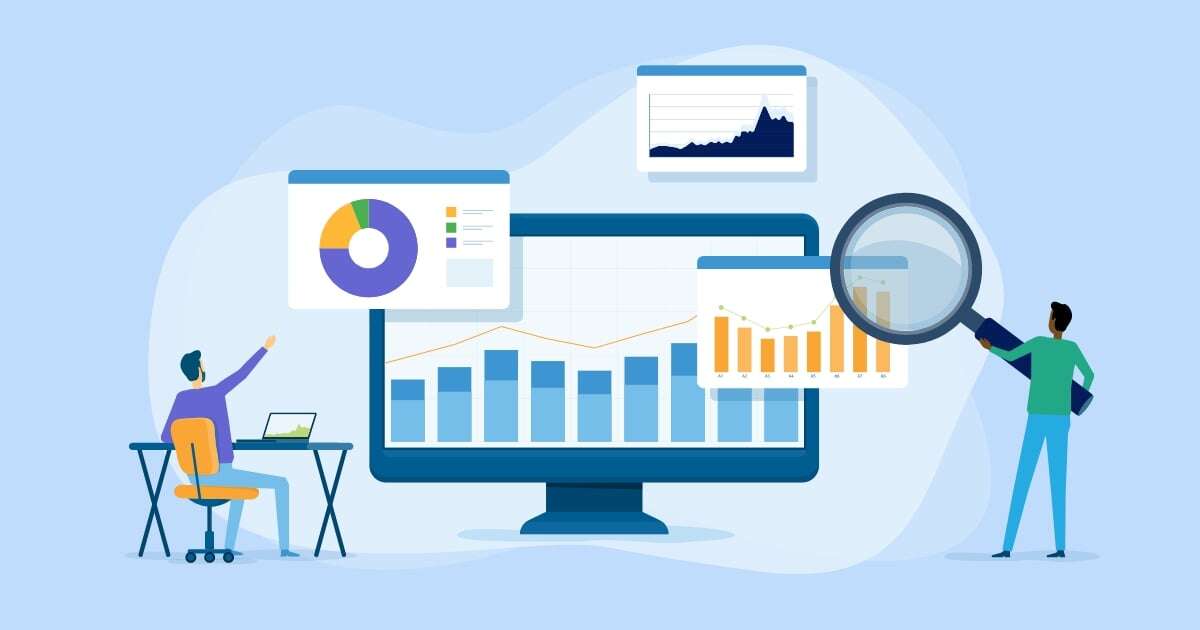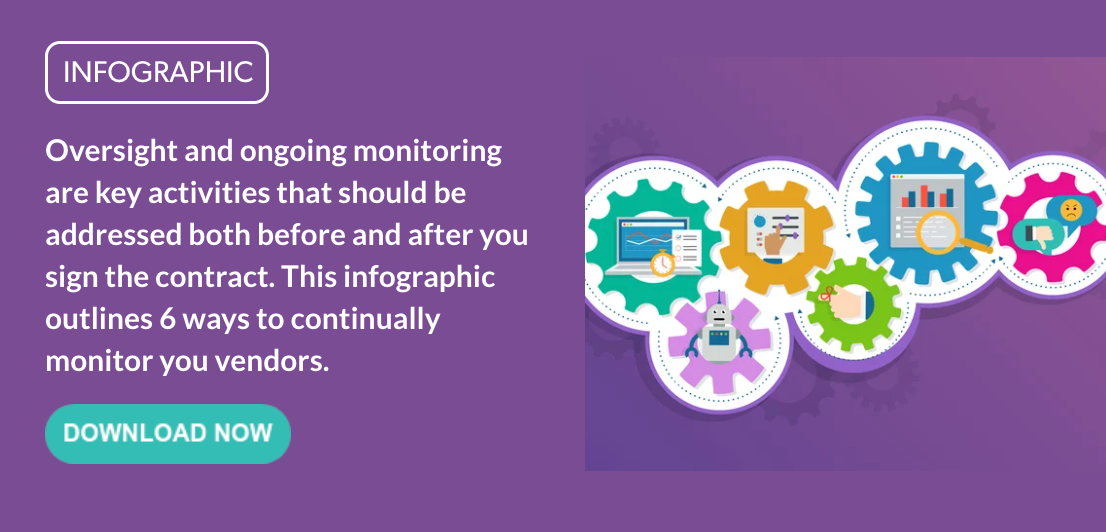With all the essential processes in third-party risk management, continuous vendor monitoring is often put on the back burner. It takes a lot of work to onboard a vendor, including performing due diligence, formalizing vendor selection and managing the contract. And, after the initial work is done, some organizations only check up on their vendors during the annual review cycle.
However, this is a risky practice that can expose your organization to new or emerging risks. This blog will help you better understand what to monitor between annual review cycles and the potential risks you could face by not taking this action. It's not only a best practice, but for many, it's a regulatory expectation!

What to Continuously Monitor
It's essential to monitor several attributes of the vendor's profile to get a better picture of the overall risk they pose to your organization. The following items should be included in your ongoing vendor monitoring strategy:
- Performance: Monitoring your vendor's performance will validate that they meet the required service level agreements (SLAs).
- Negative news and consumer complaints: Be aware of how your vendor is portrayed in the public eye. Any news of consumer complaint filings or other negative reports about your vendor can ultimately put your organization's reputation at risk.
- Financials: Stay informed of your vendor's financial health by monitoring their quarterly filings if they're a public company. If they aren't a public company, consider using financial monitoring alert services.
- Cybersecurity incidents: Ensure that your vendor adheres to any data breach notification procedures.
- Issues or changes: Continuous monitoring keeps you informed of any vendor issues or changes to their internal processes or control environment.
- Risk-based assessments: The frequency of your periodic risk assessments should be proportionate to the level of inherent risk. In other words, vendor risk present if no steps are taken to reduce or control the risk. Never adjust your monitoring frequency to match the residual risk.
Continuous Vendor Monitoring and Risk Mitigation Benefits
Continuous vendor monitoring presents many benefits and allows your organization to address any issues before they grow into more significant problems.
The following are some of the risks that can be mitigated through continuous monitoring:
- Compliance: A vendor's inadequate employee training, participation in deceptive marketing practices or misuse of customer data can expose you to compliance risk.
- Reputation: Your organization's reputation can be negatively impacted by your vendor's unresolved consumer complaints, environmental and consumer law violations or frequent management changes.
- Information security: Vulnerabilities within a vendor's physical and cyber environment can increase information security risk, escalating the likelihood of cyberattacks and data breaches.
- Financial: Your vendor's ability to consistently provide products and services can be negatively affected if they face regulatory fines, litigation or decreasing revenue.

4 Tips for Continuous Vendor Monitoring Success
While establishing your strategy for continuous vendor monitoring, keep the following tips in mind:
- Automate: Manual monitoring has an increased risk of human error or failure, so it's best to automate when possible. Consider using risk monitoring and alert services to help keep a consistent eye on your vendor's risk profile.
- Remediate: Ensure you have remediation plans to address any issues you find while monitoring.
- Report: Keep senior management and the board informed of any new or emerging issues discovered through ongoing monitoring.
- Document: Unless everything is thoroughly documented, monitoring your vendors and remediating issues will serve little value.
Annual performance review cycles are essential for an effective third-party risk management program. However, continuous vendor monitoring is necessary to stay aware of new and emerging risks between your annual review cycles. Regulators expect that organizations perform this level of oversight to ensure their vendor relationships remain safe and sound.






.gif?width=1920&name=Sample-Graphic-Animation%20(1).gif)





